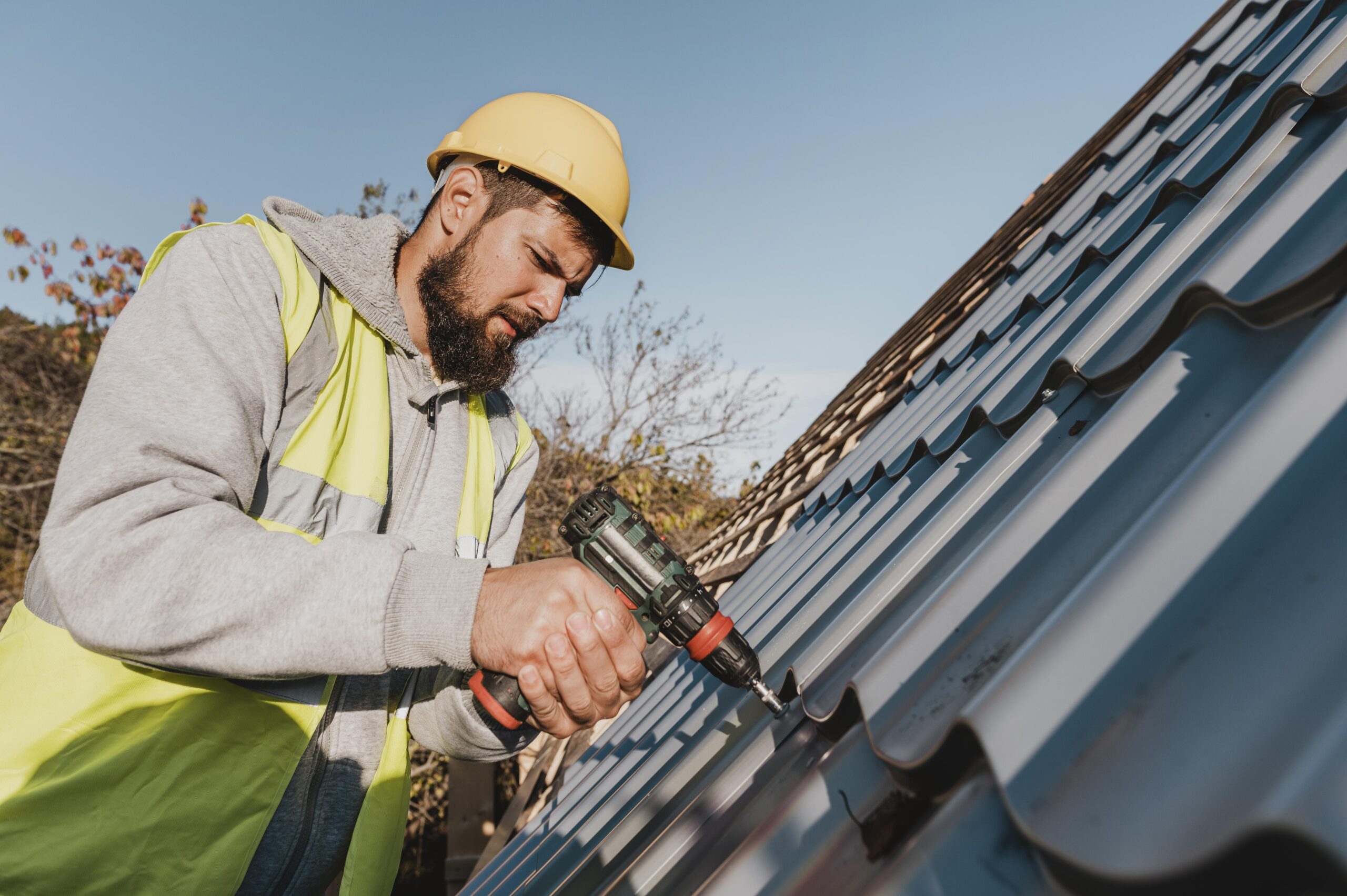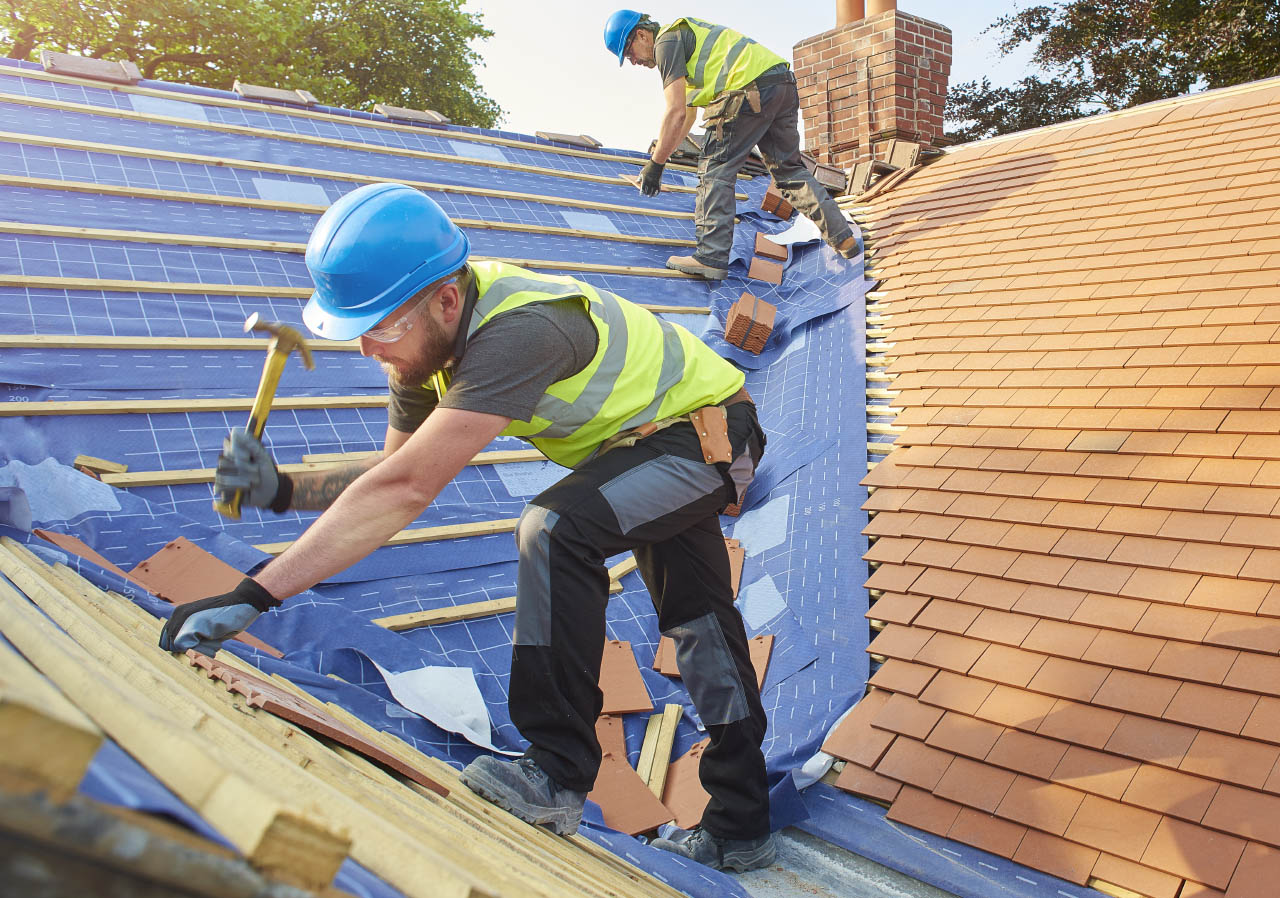Roofing Companies Oahu: Relied On Experts for Your Roofing Demands
Roofing Companies Oahu: Relied On Experts for Your Roofing Demands
Blog Article
A Property owner's Guide to Kind of Roofs: Choosing the Right Design for Your Demands

Popular Roof Styles
When it pertains to choosing a roofing system design, property owners usually consider their choices carefully to ensure both aesthetic charm and performance. Among the most popular styles are the gable, hip, and level roof coverings, each offering distinct benefits and visual qualities.
Saddleback roofs, identified by their triangular shape, are preferred for their basic style and effective water drainage. This design is especially fit for areas with heavy rainfall or snow, as it reduces the risk of water merging.
Hip roofing systems, which slope on all four sides, offer additional security and resilience, making them an excellent selection for locations susceptible to high winds. Their building complexity enables higher layout adaptability and can improve the overall visual allure of a home.
Flat roof coverings provide a contemporary visual and make best use of functional outside room, making them prominent for metropolitan settings. While they call for even more maintenance to avoid water accumulation, their streamlined look can enhance modern design.
Eventually, the choice of roofing system design should mirror the home owner's personal preference while considering factors such as local climate, architectural layout, and potential resale value. Each style adds uniquely to a home's general personality and efficiency.

Product Options
Selecting the ideal roof covering product is just as essential as choosing the ideal style, as it dramatically influences the roof's sturdiness, upkeep requirements, and total aesthetic. roofers oahu. Home owners have a variety of options to think about, each with distinct advantages and drawbacks


Metal roofing supplies exceptional toughness and longevity, commonly exceeding 50 years, while also being lightweight and immune to fire and rot. Metal roofs can be extra costly upfront.
Clay and concrete tiles supply a traditional look and excellent lifespan yet need a tough framework as a result of their weight. These materials are immune and highly long lasting to severe weather condition problems. Timber trembles give a rustic visual yet necessitate normal upkeep to avoid rot and pest damage.
Last but not least, synthetic roof products, such as rubber or plastic compounds, resemble the look of traditional products while being low-maintenance and lightweight. Inevitably, the choice of roof covering material should align with the property owner's budget, preferred life-span, and maintenance choices, making sure an appropriate match for their particular needs.
Power Effectiveness Factors To Consider
Power effectiveness plays a crucial function in the overall efficiency of a roof system, affecting both ecological sustainability and home owner energy costs. When choosing a roofing, it is important to consider materials and designs that boost energy performance. As an example, reflective roofing materials, usually referred to as "amazing roofing systems," can substantially minimize heat absorption, decreasing interior temperatures and reducing the requirement for air conditioning.
Additionally, the roof covering's shade and incline can influence its energy efficiency. Lighter colors typically show extra sunshine, while considerably pitched roofs promote better airflow, decreasing warmth accumulation - roofers oahu. Insulation likewise plays an essential duty; a well-insulated roofing can prevent warmth loss in winter months and maintain interiors cooler in summer, hence improving power savings
In addition, integrating energy-efficient roof covering alternatives with photovoltaic panels can even more minimize energy prices and dependence on nonrenewable sources. Homeowners ought to likewise think about neighborhood climate conditions when selecting roofing materials and designs, as these factors directly impact power consumption.
Upkeep Requirements
The longevity and performance of a roof covering system are considerably influenced by the upkeep demands connected with its style and materials. Various roofing types demand varying levels of upkeep, which can affect both the home owner's time and budget.
Routine cleaning of seamless gutters is essential to protect against water damage and extend the roofing's life-span. These roofing systems additionally profit from cleaning up to preserve aesthetic allure and capability.
Ceramic tile roof coverings, understood for their longevity, demand much less constant upkeep yet require mindful assessment and substitute of harmed ceramic tiles. Flat roofs, although using modern aesthetic appeals, commonly require more interest; they require regular examination for pooling water and debris removal to stay clear of leakages.
Ultimately, recognizing the upkeep demands connected with different roof covering designs enables home owners to make educated decisions, ensuring the selected roof aligns with their way of life and commitment to upkeep. Prioritizing maintenance will certainly enhance the roofing system's efficiency and expand its service life, giving assurance for many years to come.
Impact on Resale Value
When taking into consideration a new roofing system design, homeowners need to identify that the selection can substantially influence the residential property's resale value. An appropriate roof not only improves curb charm yet likewise indicates to potential purchasers that the home is properly maintained and structurally noise. Various roofing products and styles carry varying degrees of desirability in the realty market.
For example, asphalt shingles are popular as a result of their price and variety of shades, usually attracting budget-conscious purchasers. Alternatively, a steel roof covering, while more expensive upfront, provides long life and power efficiency, which can draw in purchasers looking for reduced maintenance and sustainability. Additionally, distinct styles such as slate or ceramic tile can include a touch of luxury, potentially increasing the building's value in high end markets.
Regional preferences also play an essential role; homes in areas with hefty snowfall might benefit from steeply pitched roofing systems, while coastal regions might favor resilient materials resistant to saltwater corrosion (roofers oahu). Ultimately, property owners ought to consider both aesthetic appeal and sensible benefits read this article when picking a roof. A thoughtful option ensures that the financial investment not only fulfills individual demands yet also boosts the residential property's marketability and resale potential
Verdict
Finally, choosing the suitable roofing design demands a cautious evaluation of numerous aspects, including regional environment, building design, and upkeep demands. Each roof covering option, whether it be gable, hip, or Get More Information level, possesses distinctive benefits and downsides that impact power efficiency and prospective resale value. Inevitably, an educated choice regarding roofing system selection can boost the visual appeal, capability, and long life of a home, guaranteeing it stays an important possession for years to come.
Choosing the appropriate roof style for your home is an important decision that can dramatically influence both appearances and performance. While gable roofs excel in water drain, hip roofs may use greater resilience against wind.When considering a new roof covering style, property owners should recognize that the choice can dramatically affect the residential or commercial property's resale value. Ultimately, home owners ought to consider find here both visual charm and practical advantages when choosing a roofing.In verdict, selecting the ideal roof covering style requires a mindful assessment of different variables, consisting of neighborhood environment, architectural design, and maintenance needs.
Report this page